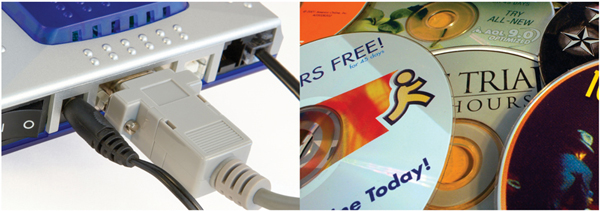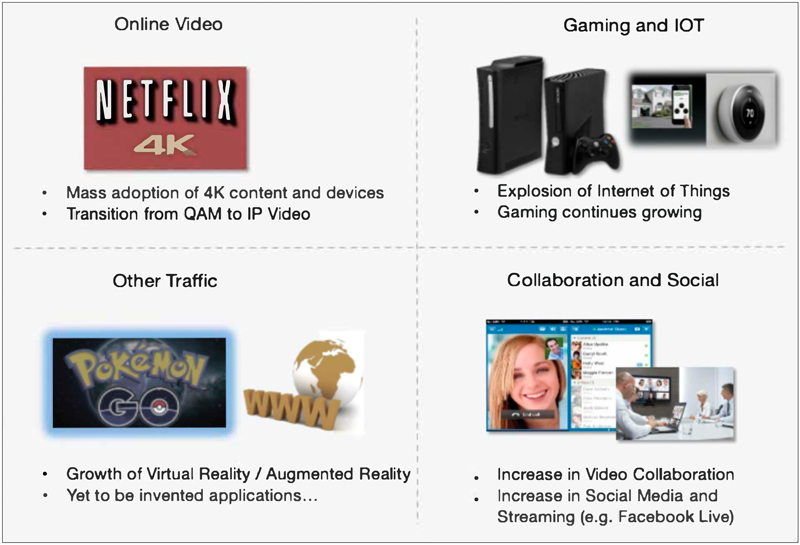Mid-Split / High-Split
By Doug Jones
Ron Hranac wrote an excellent article for Broadband Library back in February 2020 (https://broadbandlibrary.com/ understanding-band-splits-in-two-way-networks/) which details the history of the various splits available for HFC networks, from the perspective of the change to hybrid fiber/coax (HFC) network. This article looks at how band splits have been driven by broadband service needs.
As consumers’ bandwidth needs continue to grow, cable operators are looking for ways to expand their network capacity to accommodate future increases in data traffic—especially upstream traffic. Band splits play an important role in that effort, taking advantage of the incredible resiliency of cable’s HFC network.
On the HFC network, the broadband pipe is “split” into two parts that has data traffic traveling in opposite directions: downstream from the Internet to your home, and upstream from your home back to the Internet. This bidirectional flow allows the use of interactive services like video chat, teleconferencing, telehealth, and more. The split determines how much spectrum on the coaxial cable is dedicated to downstream and upstream, and the amount of spectrum that can be turned into broadband capacity.
A driver for more upstream broadband is the result of folks doing more at home. Upstream video is a key reason. Video requires more bits compared to just voice flows. A simple phone call uses under 100 kbps while a video call is nominally 1 Mbps, which is 10x more bits than a phone call. Video calls add up quickly across an entire service group.
Over the years there have been many different splits which recently have been standardized by the DOCSIS specifications as sub-split, mid-split and high-split. The accompanying table translates each split to the available broadband capacity using DOCSIS 3.1 technology.

It is easy to see that mid-split and high-split allocate more spectrum to the upstream, which means more upstream capacity and faster upstream speed tiers. Today in North America, sub-split is predominant; driven by broadband adoption and usage, several operators are operating mid-split plant and trials with high-split are underway. In Europe there are several operators already using high-split.
The rest of this article looks at how advances in Internet and networking technologies have influenced the development of cable broadband.
In 1997 when DOCSIS products became available there was a single upstream RF channel, and it could be as narrow as 200 kHz. That 200 kHz channel provided about 300 kbps of upstream capacity, which today that would not be enough to support even one Zoom call (wider bandwidth upstream channels were available). What existed back then were Internet bulletin boards intended for dial-up connections.
Back then the dial-up 9.6 kbps was a normal speed. The premium service was ISDN which provided symmetric speeds up to 128 kbps for an individual user over a telephone line. DOCSIS 1.0 supported downstream capacity of up to 40 Mbps (equivalent to ~ 300 ISDN lines) and upstream capacity of up to 10 Mbps (equivalent to ~80 ISDN lines). The DOCSIS capacity was shared by multiple users which made much more efficient use of resources and brought affordable broadband to customers.

Looking back, DOCSIS 1.0 would support multiple Zoom calls — of course, digital video compression would have been needed but it would be interesting to go back into the lab to see the current web conferencing applications operate over DOCSIS 1.0 technology.
Speeds higher than dial-up were needed. It was in 1993 when America Online (AOL) started mailing CDs to homes trying to get people online to use their content. The web browser Netscape appeared in 1994. Microsoft offered Internet Explorer in 1995, which was the year CableLabs first investigated broadband. Google was founded in 1998. You could say that cable was paying attention to market trends and that DOCSIS technology showed up at the right time.
In the early versions of DOCSIS specifications (1.0, 1.1, and 2.0), the equipment could not use all the sub-split upstream spectrum. DOCSIS 1.0 and 1.1 equipment supported up to a single upstream 3.2 MHz channel. DOCSIS 2.0 doubled the width of that single upstream channel to 6.4 MHz, still not nearly enough to use up the sub-split return spectrum. There was no need at that time because the predominant applications were web surfing which used very little upstream, and simple text-based email.
But then a series of advancements took place which meant that more upstream was needed. In the early 2000s, Wi-Fi started to go mainstream. In 2002 the iMac first included Wi-Fi, and consumers started adopting wireless which meant that more than one computer in the home could use the broadband connection at the same time. YouTube launched in 2005, and now consumers wanted to upload videos (large files) to the Internet. In 2007 the iPhone was introduced and now phones had cameras, and consumers wanted to share their pictures and videos among family and friends.
DOCSIS technology adapted by providing both more upstream and downstream capacity. It was in 2006 when the DOCSIS 3.0 specification included channel bonding and introduced mid-split. For the first time, a cable modem could use all the sub-split spectrum providing an aggregate of about 100 Mbps upstream throughput. Later DOCSIS 3.0 modems increased that to 200 Mbps on a mid-split where more spectrum is available. Looking at downstream channel bonding, it is interesting to note that 2007 was when Netflix started streaming — also coinciding with DOCSIS 3.0 technology.

And then it was off to the races; the adoption of consumer broadband was mainstream. In 2013 the DOCSIS 3.1 specification introduced high-split and new technology to allow even faster speeds with the available spectrum. DOCSIS 3.1 modems have the capability to use all the spectrum of a high-split return.
The DOCSIS 4.0 specifications have defined new upstream splits, known as ultra-high splits (UHS), to 300 MHz, 396 MHz, 492 MHz, and 684 MHz. DOCSIS 4.0 modems have the capability to use UHS-684 which will support up to 6 Gbps in the upstream.
As the needs of consumer broadband have advanced over the last 20 years, so have the capabilities of DOCSIS technology. New splits were needed to support more upstream capacity for applications that consumers want to use, while also increasing downstream speeds. The cable broadband network has not only kept up with consumer needs, in fact, cable broadband has facilitated the launch of popular consumer applications.
 Doug Jones,
Doug Jones,
Principal Architect, CableLabs
Doug Jones is a principal architect at CableLabs and is responsible for developing the DOCSIS 4.0 certification program. With 28 years in cable as both an operator and a supplier, Doug has been focused on driving fiber deeper into the HFC network, the evolution of DOCSIS technology, and FTTH and PON technologies. Doug participates in several SCTE standards working groups including the SCTE Rocky Mountain Chapter.
Editorial credit: rblfmr / Shutterstock.com
Shutterstock



